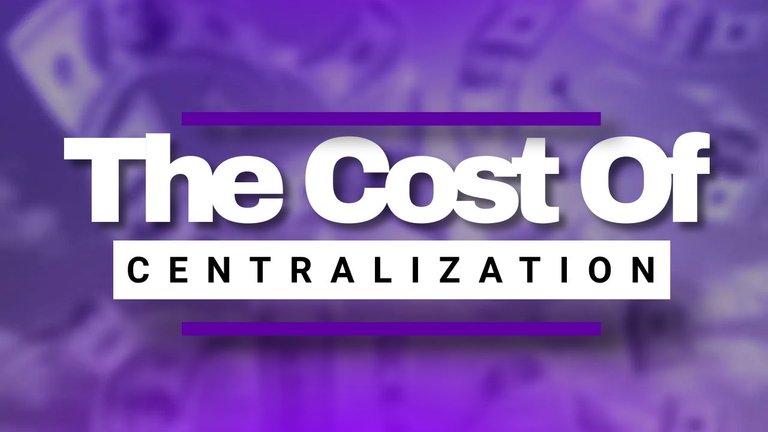
Abstract:
Centralization's pervasive influence spans numerous sectors, from banking to administrative entities. This research delves into the repercussions of such centralization and contrasts it with the rising trend of decentralization in the financial domain based on mostly US and some Canadian demographics.
Introduction
Centralization, while facilitating structured operations and controls, often diminishes autonomy, choice, and representation. While sociopolitical systems and global cultures lean towards decentralization, the financial realm predominantly showcases centralized methodologies. The ascent of decentralized finance signals a shift in economic perspective, underscoring an enhanced quest for freedom and self-determinism.
Governance and Centralization
A fully centralized political construct can mirror autocratic governance structures. In contrast, decentralized governance ensures broader representation, power distribution, and enhanced democratic processes. Despite this discernible cultural tilt towards decentralization, a void exists as institutional frameworks remain primarily centralized. Recent adaptations to this trend include emerging blockchain IDs, KYC procedures, tokenizing tangible assets, and introducing Central Bank Digital Currencies (CBDCs).
Traditional Banking: An Exposition of Costs

Traditional banks, despite their widespread convenience, come with a suite of costs that we will cover mainly looking at the US financial market:
Overdraft & Non-sufficient Funds (NSF) Fees: According to data from Bankrate.com and consumerfinance.gov, the average overdraft fee is nearly $30, with variations ranging from $10 to $40. Notably, 96% of accounts charge overdraft fees and 87% charge NSF fees. Statistics reveal that individuals paying more than 10 overdraft fees per year constitute nearly three-quarters of all overdraft fees, with frequent overdrafters paying an average of $380 annually. American households spent approximately $11 billion on overdraft charges in 2019, and while overdraft protection is available, it also comes with a cost. Consumers have an average of about two overdrafts per year, but in practice, a minority of bank consumers, 18%, account for the majority of overdrafts.
ATM Transactions: A standard out-of-network transaction attracts a fee of $4.66, compounded by a non-customer surcharge of $3.14, as reported by atmarketplace.com. Although the number of banks allowing free out-of-network withdrawals is at a record high, it represents less than one-third of accounts (32%). The three biggest banks in America, JPMorgan Chase, Bank of America, and Wells Fargo, earned over $6.4 billion in ATM and overdraft fees in a single year, as mentioned by CNN. Business Insider notes that daily ATM withdrawal limits range from $300 to $3,000, and MyBankTracker indicates an average daily transaction limit of about $5,884 and a monthly limit of about $9,909.
Maintenance & Usage Fees: Investopedia states that the average monthly maintenance fee for checking or savings accounts is $13.95, summing to an annual cost of $167.40. Although waiver options exist, they often require maintaining balances between $500 to over $1,000. Amongst the top 10 US banks, the average monthly maintenance fee is around $9.60, and according to MyBankTracker, banks charge roughly $3 for standard delivery transfers and, on average, about $8 for next-day delivery.
Inactivity & Dormancy Fees: These fees vary, with an average monthly cost of approximately $9.60, as indicated by Investopedia, but some institutions may charge higher fees, such as $25 or more. Forbes adds that this fee typically ranges between $10 and $20 monthly.
Investment Fees: Maintenance or custodian fees can vary, ranging from $50 to $200 per year or more in the US, with Canadian banks charging closer to double that range. Fees can be waived if the account meets a minimum money invested threshold. Expense ratios are annual fees charged by mutual funds, index funds, and exchange-traded funds or ETFs, typically ranging from 0.04% to 2% or more. Commission fees for online trading can range from $3 to $10 per trade, depending on the bank or the broker, with some offering discounts for high-volume traders. Management or advisory fees range from 0.40% to 0.90% or more for managing your funds. 58% of Americans own stock, so most Americans are paying some form of these fees. However, only 19.5% of the trading volume comprises individual investors.
Additional Fees:
Paper Statement Fees: Approximately $2-3 a month
Check Purchase Fees: Between $20 to $35
Bounced Check Fees: Vary, with the default NSF averaging around $30 per Bankrate.com. Both parties may incur fees, and some merchants may charge additional penalties.
Here’s a summary and total average:
Overdraft & NSF Fees:
Average overdraft fee: $30
Average users: 2 overdraft fees/year
Frequent overdrafters: $380/year
ATM Transactions:
Out-of-network transaction: $4.66
Non-customer surcharge: $3.14
Maintenance & Usage Fees:
Average monthly maintenance fee: $13.95
Average yearly maintenance fee: $167.40
Average transfer fee: $3 (standard), $8 (next-day)
Inactivity & Dormancy Fees:
Average monthly fee: $9.60
Additional Fees:
Paper statement fee: $2-3/month
Check purchase fees: $20-35
Bounced check fee: $30
Investment Fees:
Maintenance or custodian fees: $50 to $200 per year
Expense ratios are annual fees charged by mutual funds, index funds, and ETFs: 0.04% to 2%+
Commission trading fees: $3 to $10 per trade
Management or advisory fees: 0.40% to 0.90%+
Additional intricacies include withdrawal limitations, payment restrictions, permissioned access, lack of full liquidity access, and constrained operational hours. A notable financial discrepancy emerges when observing banks' lending practices, often leveraging depositor funds multiple times their original value.

Potential Average Cost Per Year and Per Month
Overdraft & NSF Fees: Assuming an average person might pay 5 overdraft fees per year, that's $30 * 5 = $150/year.
ATM Transactions: Assuming 2 out-of-network transactions per month, that's $4.66 * 2 * 12 = $111.84/year.
Maintenance & Usage Fees: $167.40/year for maintenance + $36/year for standard transfers = $203.40/year.
Inactivity & Dormancy Fees: Assume no fees if the account is active.
Additional Fees: Assume $2.50/month for paper statements = $30/year.
Investing Fees: $130
Total Average Cost: $625.24/year or $52.10/month.
Scenario 1: Person Good with Their Money
Avoids overdrafts: $0.
Uses in-network ATMs, 2 times per month: $0.
Low maintenance fee through balance waiver: $100/year (potentially $0 if full fee waived).
No inactivity or dormancy fees.
No additional fees (e.g., paperless billing).
Invests in mutual funds to avoid commission fees and holds enough in their portfolio to have all custodian fees waived.
Total Average Cost: $0-100/year or $0-8.33/month.
Scenario 2: Person Not Good with Their Money
Pays 10 overdraft fees per year: $300.
Uses out-of-network ATMs, 4 times per month: $223.68/year.
Pays full maintenance fee: $167.40/year.
Incurs additional fees (paper statements, bounced checks): $70/year.
Will occasionally gamble on penny stocks and pays the full custodian fee: $250/year.
Total Average Cost: $1011.08/year or $84.25/month.
With the right bank, you could technically pay $0 with a minimal investing account, but most people don’t have that luxury. When we are talking strictly about bank account owners, they range on average from $100 a year up to $1011 a year with an average of $625 with no actual maximum or upper limit to the amount of money you could spend if you chose to manage your money foolishly or day trade for example. Remember that there isn’t enough data on how many people fit into these categories and the specific demographics.
These scenarios illustrate how sound financial practices can save substantial banking fees. The more diligent person could pay less than a tenth of what someone not managing their money well might.
Evaluating The Efficiency of Cash in a Digital Age

The timeless adage "Cash is king" reverberates with many, especially those with a penchant for tangibility in an increasingly virtual world. But is it? Let's dive into the merits and drawbacks of using paper currency in this digital age.
As the world increasingly adopts digital methods, the utility of cash encounters several challenges. Only some establishments or businesses now entertain the idea of cash transactions. Some venues have transitioned solely to electronic or card transactions, rendering cash obsolete. This sidelining is one of many drawbacks. The tangibility of money makes it susceptible to theft, and once it's gone, it's often gone for good. The silent nature of cash also means it needs to have inherent trackability. For those keen on maintaining detailed records, this can pose a significant challenge, making expense tracking and financial documentation an uphill task. Further, the use of cash comes with its own set of inconveniences. Ensuring you have the right amount and denomination, especially for large transactions, can take time and effort. Travelers feel the pinch of physical limitations when they're restricted in the amount they can carry across borders. And while cash might seem like a standalone entity, it is very much under the purview of central banks, making it susceptible to factors like inflation and broader monetary policies.
However, the charm of cash has yet to wane entirely. Its tactile nature ensures immediacy in transactions without technological hiccups or waits. Cash transactions leave behind no digital trail, offering users a layer of privacy and anonymity that digital counterparts might struggle to match. From a budgeting perspective, the physicality of money provides a tangible gauge of one's spending habits as a constant reminder of financial discipline. Moreover, cash transactions come without the added burden of hidden fees or interests that some electronic methods might impose. An often-overlooked advantage of cash is its allure for certain vendors; many offer discounts for cash payments, given it might not enter official books.
Despite these pros and cons, I have a soft spot for cash. I often lean towards using it for my transactions, reserving credit for essential bills to maintain and enhance my credit score. The cost you must pay is the inability to carry a large amount, not having access to online services, needing to store it somewhere safe, and the risk of theft. You don’t generally have a higher cost when using cash unless you opt out of online services that may cost you more money and time to access in person and pay for with cash.
When evaluated holistically, while cash has its merits, it presents a somewhat centralized and outdated solution to modern financial challenges. However, I will always champion cash for privacy and anonymity; it’s arguably the best.
Cryptocurrency: A Narrative of Financial Autonomy

Investing in cryptocurrencies, such as Bitcoin, allows individuals to operate as their own financial institutions without external entities managing or deriving profits from their assets. This self-sovereign financial approach offers uninterrupted access to assets around the clock. The system ensures swift transactions without overdraft fees, irrespective of the asset’s quantity.
The stipulations of minimum balances, inactivity penalties, and other supplementary costs often found in traditional banking systems need to be included. The only associated expenditure pertains to transaction fees, notably minimal when juxtaposed with conventional financial mechanisms like wire transfers or bank checks.
Stablecoins: The Double-Edged Sword

Within the realm of cryptocurrency, Tether (USDT) and USD Coin (USDC) have emerged as dominant stablecoins, with USDT boasting a market cap exceeding $83 billion and USDC surpassing $26 billion. Together, they control a staggering 86% of the stablecoin market.
Yet, their dominance doesn't shield them from criticism. Both employ a blacklist mechanism, barring specific addresses from transacting with the coins. Currently, USDC has 174 addresses blacklisted, amounting to approximately $68,385,650, while USDT has blacklisted 917 addresses with a combined worth of nearly $471,410,243.
Paypal has also announced a stablecoin called PYUSD with similar qualities to USDT or USDC.
Understanding PYUSD's origins necessitates a glance at its creator, Paxos. Paxos had earlier rolled out BUSD, which eventually transformed into PAX and then later USDP. This USDP foundation paved the path for the emergence of PYUSD. Interestingly, Paxos had collaborated with Binance for the management of BUSD. However, regulatory hurdles in 2023 led the SEC to halt the minting of BUSD. This cessation compelled a shift to USDP. This past scenario inevitably raises concerns about the potential recurrence of such regulatory obstacles with PYUSD.
Furthermore, it is noteworthy that PYUSD had earlier brandished the name "Hopper USD" under the symbol XYZ. Like its peers in the stablecoin realm, PYUSD carries specific features, some of which might raise eyebrows—these include the potential to freeze addresses, modify supply quantities, and even obliterate frozen addresses. Given Paxos' historical affiliations with PayPal and Binance, it's crucial to monitor the trajectory of PYUSD, understanding the implications of its features and regulatory landscape.
However, this centralization comes at a cost. USDC transactions, for instance, are about 40% pricier than transactions involving DAI, a decentralized stablecoin by MakerDAO. This stems from the additional checks ensuring that neither transacting party is blacklisted, explained in the next section.
How USDC’s Blacklist Checks Cost More
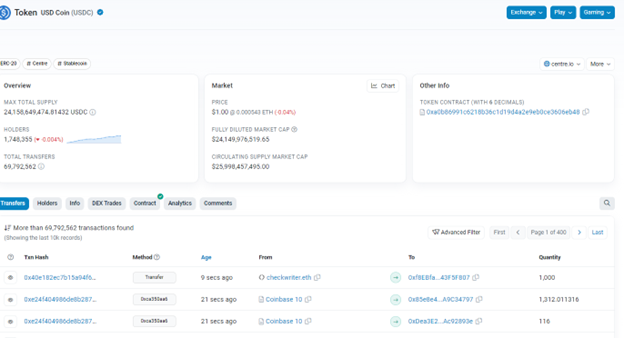
Source: https://etherscan.io/token/0xa0b86991c6218b36c1d19d4a2e9eb0ce3606eb48
When USDC's transfer function is activated, it ensures neither the sender nor receiver is on a "blacklist". Centre's whitepaper says this list ensures user safety and meets regulatory standards. Each blacklist check costs about 2100 gas, or $0.108. A transfer incurs two checks, costing $0.216, while transfer From undergoes three checks, totaling $0.324.
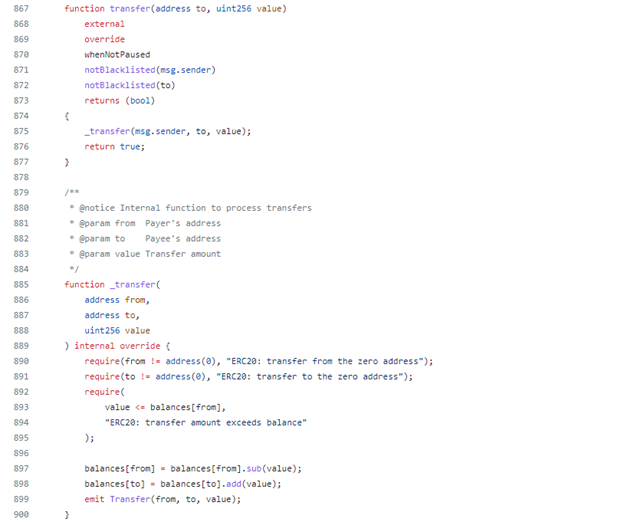
Source:
The primary cost comes from reading storage to verify if an address is blacklisted. As noted by Alex Kroeger in his USDCV3 Proposal, Ethereum's yellow paper specifies action costs in the EVM. Accessing a storage spot (a "cold sload") costs 2100 gas. If that spot is revisited in the same transaction, it costs 100 gas. The three addresses involved (sender, receiver, and caller) are usually unique, so each check typically costs the full 2100 gas. We assume that while it could be a call to the same address only costing 100 gas, we are checking new addresses most of the time, so 2100 gas is the best number for this calculation.
Based on the average gwei of 28.31 on August 7, 2023, valued at about $0.000051826268 USD, 2100 gas is valued at $0.108 every time the blacklist is checked.
Also, the approve function, which permits another address (like Uniswap) to access your balance, undergoes two blacklist checks. These checks are redundant, as even if a blacklisted address is approved, the transfer functions' checks prevent fund movement.
Remember that this data is purely focused on Ethereum, and we do not cover the other costs incurred on stablecoins using other blockchains. The cost is much higher when you aggregate all the fees from every chain but likely similar on average, depending on the cost of basic functions for each blockchain.
In the last 90 days, there have been 1,662,933 Transfers functions called for USDC, each paying for two blacklist checks. At $0.108 per transfer, these approximately costed users $359,193.52 in extra fees paid by USDC users. There were 46,893 Transfer From functions, each paying for three blacklist checks. At $0.108 per transfer, these approximately costed users an additional $15,841.33 in extra fees paid by USDC users. This is a total cost of $375,034.85.
If we were to do a very rough estimate, with 1,748,410 holders, 90 days worth of transactions is costing the average user $4.66 more or $1.55/month. However, given many holders are not active, it’s much more likely to be a much higher amount of fees being paid by active users. On average, there is usually less than 20,000 active unique user accounts receiving and sending daily, according to the analytics on Etherscan in 2023. So, we can assume that those 20,000 users are active, and repeat users are making an average of 87 transactions per month when we assume they make up most of them. When factoring this in, active users are more likely to pay closer to $6.25/month in extra fees for the blacklist.
Proposed solutions, such as the USDC v3, could further exacerbate the centralization problem. The new version suggests doing away with the blacklist checks during transactions, introducing a "freezeBalance" function instead allowing an admin to freeze funds. While this could help more with gas fees, it doesn’t do anything in the way of centralization. One could argue it centralizes their processes more into the hands of select administrators. All centralizations lead to more centralization by design.
This section heavily relied upon Alex Kroegers “A modest proposal: USDC v3” - https://alexkroeger.mirror.xyz/RJ1gZ8tAfqXOmfA3MJz0AkD082c-3hwr2lba-F1j3uw
How USDT’s Blacklist Function Mirrors USDC
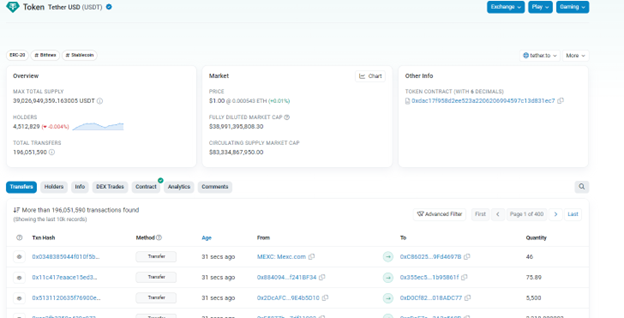
Source: https://etherscan.io/token/0xdac17f958d2ee523a2206206994597c13d831ec7
By visiting Etherscan, navigating to USDT, then taking a look at their contract, we can derive from the code, that the exact same thing is happening on Tether.

Source: https://etherscan.io/token/0xdac17f958d2ee523a2206206994597c13d831ec7#code
Above, you can see that the transfer from and to functions both check the blacklist meaning just like USDC, it’s performing two functions to check the sender and receiver.
Similarly, to USDC, with a 2100 gas cost to perform these extra actions, based on the average gwei of 28.31 on August 7, 2023, valued at about $0.000051826268 USD, that’s $0.108 extra per transfer.
Based on the last 90 days of data from Etherscan (May 7 2023-August 7 2023), 6,640,893 USDT ERC20 Transfers functions have been called, with every single one paying for two blacklist checks. At $0.108 per transfer, that’s approximately $1,434,432.88 worth of extra fees USDT users pay. There were 200,031 Transfer From functions called, each paying for three blacklist checks. At $0.108 per transfer, these approximately costed users an additional $64,810.044 in extra fees paid by USDT users. This is a total of $1,499,242.92
If we were to do a very rough estimate, with 4,513,926 holders, 90 days worth of transactions is costing the average user $3 more or $1/month. However, given many holders are not active, it’s much more likely to be a much higher amount of fees being paid by active users. On average, there are usually less than 100,000 active unique user accounts receiving and sending daily, according to the analytics on Etherscan in 2023. So, we can assume that those 100,000 users are engaged and repeat users and perform an average of 45 transactions per month when we assume they make up the majority of transactions made. When factoring this in, active users are more likely to pay closer to $5/month in extra fees for the blacklist.
Total Costs To Use USDC & USDT

Since the beginning of 2023, Ethereum has had an average gas fee of about $5 USD and a median gas fee of closer to $2 USD. So, in total, stablecoin Ethereum gas usage costs could average from $2-5 by default, with users paying an average of $1-5 more per month on top of those fees. The average active USDT user might spend up to $162.50 USD in extra fees. This is relatively expensive but still on the low end compared to banks, especially when including investing fees. Similarly, for USDC, the average active user might be spending up to $310.75 USD in extra fees while also being more active and sending twice the volume of transactions that the average active USDT user might send.
The average cost in extra blacklist fees for USDC & USDT paid by users per month (May 7 2023-August 7, 2023) was $624,759.26 USD.
DAI: The Only Good Stablecoin
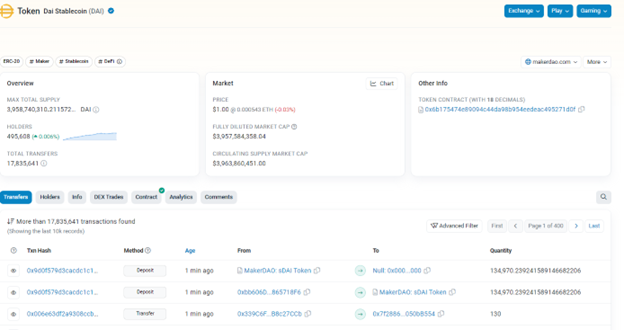
Source: https://etherscan.io/token/0x6b175474e89094c44da98b954eedeac495271d0f
As far as I’m aware, the only good stablecoin in existence is DAI. Unlike USDT, USDC, and likely soon PYUSD, it has no blacklist, no ability to freeze funds, it’s open source, it’s overcollateralized, it’s decentralized, and it’s backed by cryptocurrency instead of fiat.
It’s essential that our stablecoins are pegged to sound assets that central banks don’t control, like fiat-pegged stablecoins, and DAI is one of the few options available for people who want to do away with anything fiat-related while still having a reliably stable cryptocurrency for liquidity.
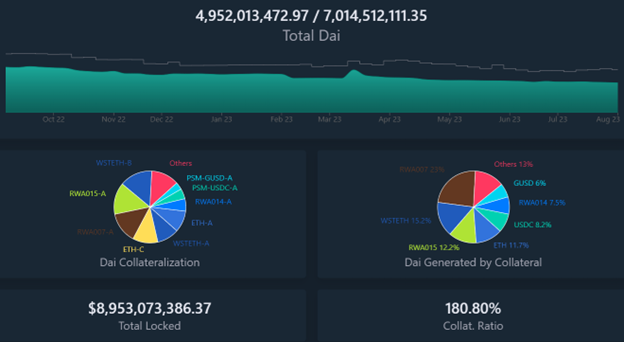
Source: https://daistats.com/#/
Today, DAI has nearly 9 billion dollars worth of cryptocurrency locked up with 180.80% collateral, meaning they could have 80% more DAI coins issued instead of just under 5 billion. Still, they are very cautious about ensuring they always have significantly more than enough collateral to stabilize DAI.
With the same Ethereum gas fees but saving the extra added cost by not using a blacklist, DAI users can save up to $0.32 per transaction more than their USDT and USDC counterparts. With 495,608 holders and 138,918 Transfer functions called in the last 90 days and 3,000 average active daily unique users, we estimate that active users make approximately 46 monthly transactions, costing about $162.07 on average. While it is very close to USDT, it’s cheaper and affords more transactions.
Based on the current average fee of $3.19 per transaction, you spend just over 10% more per transaction when calling a Transfer From function and 6.8% when calling a Transfer function for USDC & USDT compared to DAI.
Pondering CBDCs: The Dystopian Future of Finance
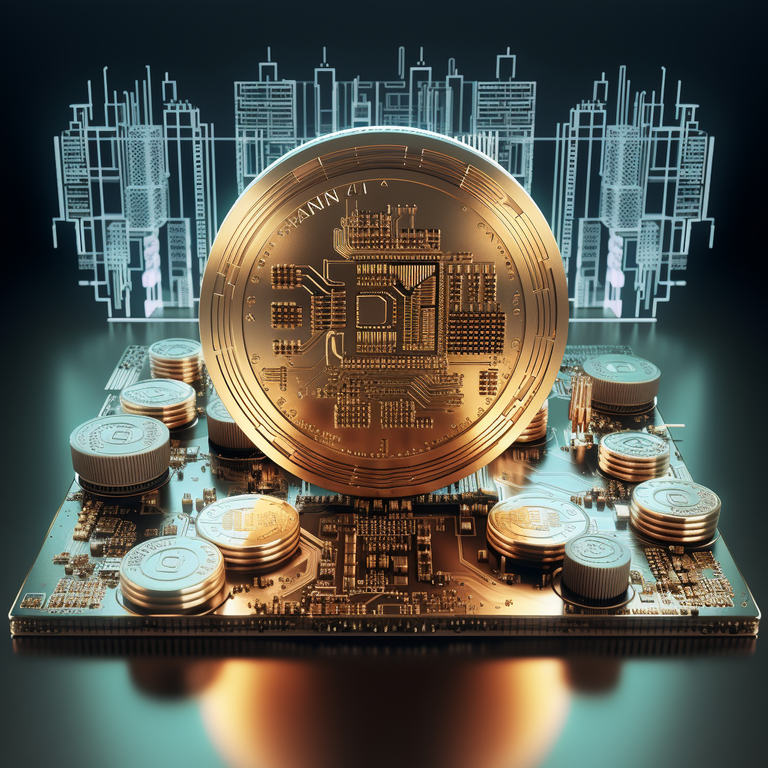
The horizon hints at a new dawn with Central Bank Digital Currencies (CBDCs) poised to redefine financial transactions. They're not just a mere amalgamation of banking and digital currencies but a sign of things to come.
It employs the drawbacks of traditional banking, such as centralized systems, inherent with their control needs, regulatory adherence, and profit motives, and includes the banking challenges we previously discussed.
While CBDCs glisten with the allure of digital efficiency reminiscent of cryptocurrencies, they harbor the shadow of centralized control reminiscent of traditional banking. These digital currencies are direct vassals to central banks, which can be a double-edged sword. The stability offered could be at the cost of unparalleled financial surveillance, control, and censorship.
CBDCs potentially combine the demerits of both stablecoins and cash. While they might reduce transactional expenses, they can implement oversight mechanisms surpassing current banking systems. And unlike their decentralized counterparts, they might significantly curtail user autonomy and privacy.
Conclusion

The dichotomy between centralization and decentralization defines our evolving financial landscape. Banks, with their reliability, impose considerable charges. Conversely, cryptocurrencies grapple with centralization issues while offering autonomy, particularly within the stablecoin subset. The industry's pivotal challenge lies in harmonizing safety, cost efficiency, and decentralization.
Centralized stablecoins are not only more restrictive, but those with blacklists cost more to use. All aspects of centralization tend to add more processes and excess in a way that will always cost more. Users, not the issuers, incur these costs. So, it’s up to you as a user of stablecoins to be aware of the money lost by patronizing stablecoins like USDT, USDC, and now PYUSD.
The solution to these problems isn’t simple. It’s a combination of using crypto where possible, cash where crypto isn’t possible, and credit where it’s the only option. It also involves shifting our focus and priorities towards businesses and services that accept crypto and encourage cash. As CBDCs take over, we only hope to keep parallel economies running so we don’t have only one option.
Acknowledgments
My gratitude goes out to the authors, researchers, and institutions whose studies and reports have informed this paper, specifically Alex Kroeger, for his research on USDC. I also thank the Bitcoin community for its ongoing commitment to innovations and energy efficiency. Thanks also to AI for helping me organize and prepare the final copy.
References
Twitter Post from 0xCygaar
Twitter Post from TalBeery
https://dune.com/phabc/usdc-banned-addresses
https://dune.com/phabc/usdt---banned-addresses
https://tether.to/en/transparency/
https://dune.com/queries/346258
https://medium.com/human-rights-foundation-hrf/privacy-and-cryptocurrency-part-iv-stablecoins-for-human-rights-blacklists-and-traceability-6d74ee17c25d
https://alexkroeger.mirror.xyz/RJ1gZ8tAfqXOmfA3MJz0AkD082c-3hwr2lba-F1j3uw
https://cryptoslate.com/usdc-blacklist-cost-users-an-extra-3-6-million-per-month/
https://www.gobankingrates.com/banking/banks/how-much-bank-fees-cost/
https://lifehacker.com/watch-out-for-these-banking-and-investment-fees-1828158603
https://www.nerdwallet.com/article/investing/financial-fees-study-2018
https://www.investopedia.com/articles/pf/07/bank_fees.asp
https://www.bankrate.com/banking/checking/where-to-buy-checks-save-money/
https://www.nerdwallet.com/article/banking/cheap-personal-checks
https://www.bankrate.com/banking/wire-transfer-fees/
https://smartasset.com/checking-account/average-wire-transfer-fee
https://www.finder.com/bank-fees-wire-transfers
https://www.monito.com/en/wiki/bank-charges-for-sending-money-abroad
https://www.gobankingrates.com/banking/checking-account/wire-transfer-fee/
https://www.xe.com/blog/money-transfer/a-guide-to-canadian-bank-fees-for-wire-transfers/
https://www.bankrate.com/banking/checking/checking-account-survey/
https://www.creditkarma.com/money/i/monthly-maintenance-fee
https://etherscan.io/address/0x6c3ea9036406852006290770bedfcaba0e23a0e8#code
https://github.com/paxosglobal/usdp-contracts
https://paxos.com/regulation-and-transparency/
https://dune.com/hagaetc/stablecoins
https://techcrunch.com/2021/08/24/paxos-renames-its-stablecoin-from-pax-to-usdp/
https://dune.com/hagaetc/maker-dao---mcd
https://f.hubspotusercontent30.net/hubfs/9304636/PDF/centre-whitepaper.pdf
https://etherscan.io/token/0xdac17f958d2ee523a2206206994597c13d831ec7#code
https://ycharts.com/indicators/ethereum_average_gas_price
https://automatedwebtools.com/usd-eth-gas-fee/
https://daistats.com/#/
https://www.investopedia.com/articles/pf/07/bank_fees.asp
https://www.atmmarketplace.com/
https://www.cnn.com/business
https://www.consumerfinance.gov/about-us/blog/overdraft-fees-can-price-people-out-of-banking/
https://www.consumerfinance.gov/about-us/newsroom/cfpb-finds-small-debit-purchases-lead-to-expensive-overdraft-charges/
https://fortune.com/2022/04/28/americans-are-spending-a-lot-less-on-overdraft-fees/
https://www.businessinsider.com/personal-finance/atm-withdrawal-limits
https://www.mybanktracker.com/news/ach-transfer-limits
https://www.investopedia.com/terms/i/inactivityfee.asp
https://www.forbes.com/advisor/banking/5-common-bank-fees-and-how-to-avoid-them/
https://www.nerdwallet.com/article/banking/where-to-order-checks
https://www.bankofamerica.com/deposits/checking/check-ordering-faqs/
https://www.businessinsider.com/personal-finance/bank-paper-statement-fee
https://www.mybanktracker.com/checking/faq/paper-statement-fees-286326
https://www.nerdwallet.com/article/banking/checking-account-fees-study
https://bitinfocharts.com/
https://news.gallup.com/poll/335987/stock-ownership-edges-higher.aspx
https://www.investopedia.com/2020-was-a-big-year-for-individual-investors-5094063


Discord Server.This post has been manually curated by @steemflow from Indiaunited community. Join us on our
Do you know that you can earn a passive income by delegating to @indiaunited. We share more than 100 % of the curation rewards with the delegators in the form of IUC tokens. HP delegators and IUC token holders also get upto 20% additional vote weight.
Here are some handy links for delegations: 100HP, 250HP, 500HP, 1000HP.
100% of the rewards from this comment goes to the curator for their manual curation efforts. Please encourage the curator @steemflow by upvoting this comment and support the community by voting the posts made by @indiaunited.
Congratulations @scottcbusiness! You have completed the following achievement on the Hive blockchain And have been rewarded with New badge(s)
Your next target is to reach 115000 upvotes.
You can view your badges on your board and compare yourself to others in the Ranking
If you no longer want to receive notifications, reply to this comment with the word
STOPCheck out our last posts: